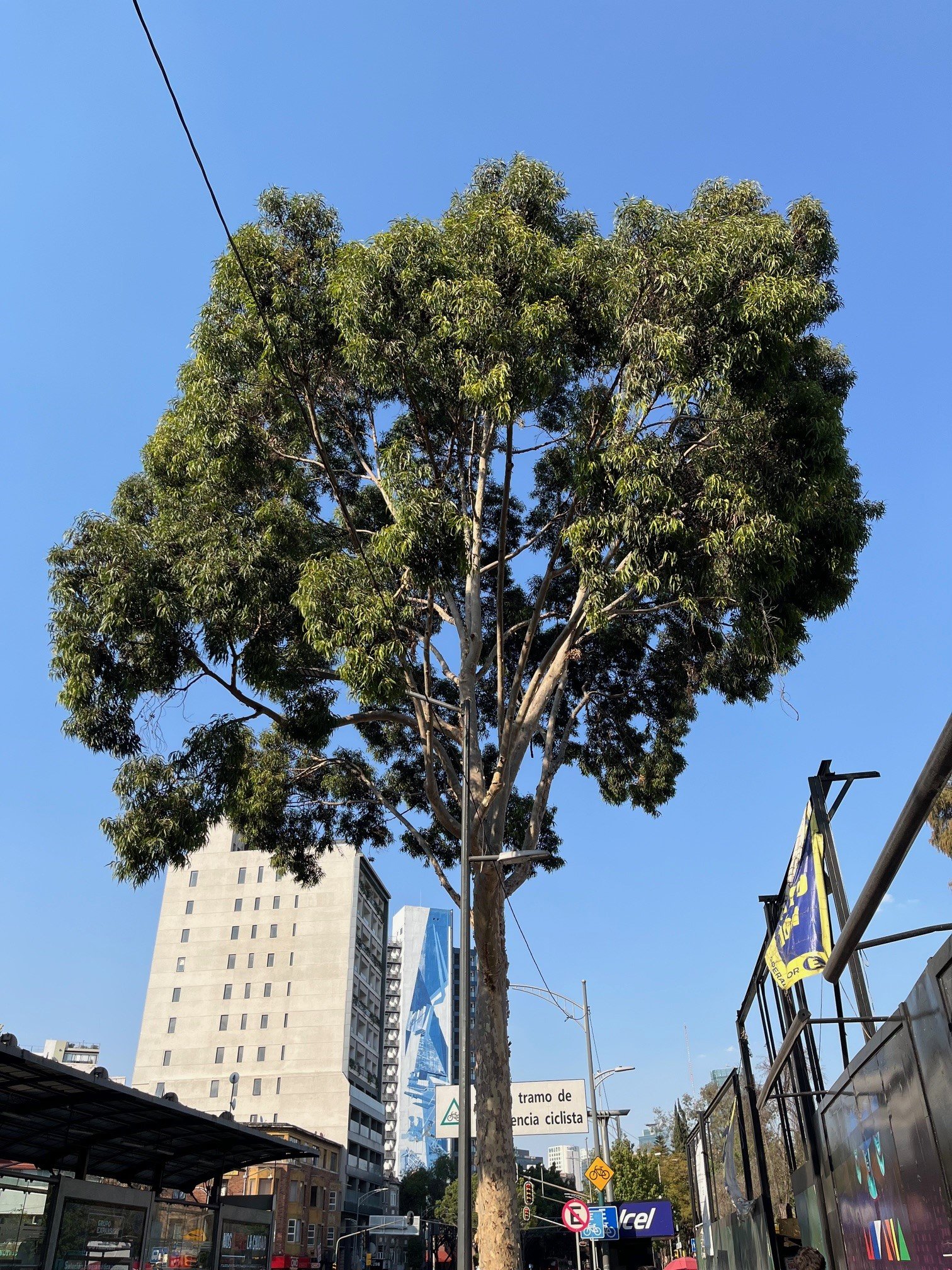Trees of Mexico City (1-25-24)
I visited Mexico City with my family in late January 2024 - we stayed in the Roma Norte neighborhood, and didn’t stray very far from there, so this blog may not be representative of the entire city’s trees.
It was my first time in Mexico City. I had heard that the city was very leafy, and I found that to be accurate. In fact, at least in the Roma Norte neighborhood, the street trees are so dense that it’s not easy to get an Instagram-worthy photo of an individual tree! This link from Google maps of a street not far from our hotel will give you a sense of this part of Mexico CIty.
We visited one of the city’s botanical gardens (Jardin Botanico del Bosque de Chapultepec), but I found it underwhelming. The cactus and agave collections were attractive, but the park is relatively small (13 acres), and very few tree specimens were labeled.
The three species that dominated the streets of our neighborhood were shamel ash (Fraxinus uhdei), glossy privet (Ligustrum lucidum) and American sweetgum (Liquidambar styraciflua). Two of the three are native to Mexico - shamel ash is native from west-central Mexico to Costa Rica, and sweetgum is found in disjointed areas from central Mexico to Nicaragua.
shamel ash (Fraxinus uhdei)
The ash trees were the most abundant of all, which saddened me a bit to think that the emerald ash borer is marching across the continent, killing every ash it encounters, and eventually I suspect will make it to Mexico City.
shamel ash (Fraxinus uhdei) - closeup of leaves and samaras (fruits)
glossy privet (Ligustrum lucidum) - closeup
American sweetgum (Liquidambar styraciflua) - closeup of leaves
Another tree that was very common on city streets was weeping fig (Ficus benjamina). It’s very rare as a street tree in my native San Francisco, but I saw it everywhere in Mexico City.
weeping fig (Ficus benjamina) - closeup
weeping fig (Ficus benjamina)
Occasionally I ran across orchid trees (Bauhinia purpurea) in bloom as street trees.
orchid tree (Bauhinia purpurea)
Not a tree, but another plant I saw everywhere in our neighorhood was split leaf philodendron (Thaumatophyllum bipinnatifidum).
When we ventured out of Roma Norte into other neighborhoods, the canopy thinned out a bit (and I also started to see some more unusual tree species. Below is a Cook pine that we encountered in the Condesa neighborhhood, not far from the city’s botanical garden. This tree always leans towards the equator (a discovery by botanist Matt Ritter in 2017), and this one was duly leaning south!
Cook pine (Araucaria columnaris) on Calle Juan de la Barrera near the corner of Avenida Mazatlan in the Condesa neighborhood
We visited Casa Gilardi, a home designed by minimalist architect Luis Barragan-designed - the family that has owned it since it was built it gives private tours. It’s in the San Miguel Chapultepec neighborhood, and if you’re into architecture or home design, I really recommend it. Inside the open air courtyard of the home is a large jacaranda (Jacaranda mimosifolia), a tree native to Argentina and Bolivia - but very popular in Mexico City.
the indoor pool at Casa Gilardi
a hallway at Casa Gilardi
jacaranda (Jacaranda mimosifolia) in the courtyard at Casa Gilardi
A couple of days later I saw what I think it the largest jacaranda I’ve ever seen - the address is 208 Jalapa in the Roma Norte neighborhood.
a huge jacaranda (Jacaranda mimosifolia) at 208 Jalapa in Roma Norte
At 7,350 feet in altitude, Mexico City isn’t tropical, but since it rarely has freezing temperatures, there are lots of palm trees that do well here. Canary Island date palms (Phoenix canariensis) were pretty common.
Canary Island date palm (Phoenix canariensis)
And not far from our hotel (at the intersection of Calle Jalapa and Calle Puebla in Roma Norte), we found a corner full of bismarck palms (Bismarckia nobilis), a tree native to Madagascar.
bismarck palm (Bismarckia nobilis)
Compared to my native San Francisco, there were relatively few eucalyptus trees. We did see a beautiful eucalyptus relative - a spotted gym (Corymbia maculata) on Avenida Insurgentes Sur near Avenida Alvaro Obregon in Roma Norte.
spotted gym (Corymbia maculata) - Avenida Insurgentes Sur















